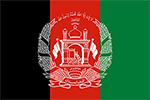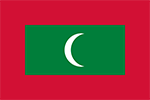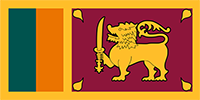Tourism
Not only as a major component of economic growth but also as means of facilitating people to people contacts, the significant role of tourisms has been recognized since early days of SAARC. The Leaders during the Second Summit held at Bangalore in 1986 underlined that concrete steps should be taken to facilitate tourism in the SAARC region. Successive SAARC Summits reiterated the importance of tourism.
SAARC Tourism Ministers meet from time to time to make recommendations for promoting tourism in the region. SAARC Working Group is in place since 2004 to pursue and implement plans and decisions under tourism. So far, the Ministers have met three times and the Working Group has met five times. The last Ministers’ Meeting was held in Kathmandu in January 2011 preceded the Fourth Working Group Meeting. A SAARC Action Plan on Promotion of Tourism has been adopted by the second meeting of Tourism Ministers (Bangladesh, 2006) and pursued since then. The Action Plan includes a joint pro-active marketing or promotional campaign of the SAARC landmass as a composite destination in the international markets. The Action plan also emphasize on the role of private sector of the SAARC region for promotion and development of tourism both intra-regionally and internationally. The Fifth Working Group on Tourism which was held in New Delhi on 25-26 November 2015, among others, emphasized on implementation of SAARC Action Plan on Promotion of Tourism in the region.
Meeting of SAARC Cabinet Secretaries
The idea of Meeting of SAARC Cabinet Secretaries was suggested by India in year 2008 to discuss professional issues of common concern such as administrative reform, procedural simplifications and implementation of development programs relevant to SAARC Countries which was welcomed by Member States. The Cabinet Secretaries of SAARC has so far met four times i.e. New Delhi, November 2009; Dhaka, April 2014; Islamabad, April 2015; and Kathmandu, June 2016.
The Forum is discussing issues of common concern and also provides a good opportunity for sharing the best practices and lessons learned in the contexts of administrative, economic, and social reforms. The Forum also discusses matters relating to rural development, administrative reforms, governance and capacity building and performance evaluation.
Nepal hosted the Fourth Meeting of the SAARC Cabinet Secretaries on 9-10 June 2016 in Kathmandu, The delegations of the Member States emphasized on the importance of collective aspiration and cooperation for achieving common objectives aimed at prosperity and welfare of the peoples of the region and appreciated the initiatives taken by the Member States.
So far, number of programs, workshops and initiatives has taken place under this Forum with the participation of officials from SAARC Member States.
Apex and Recognized Bodies of SAARC
SAARC attaches high priority to the promotion of people-to-people contact in the region and to foster mutual understanding and goodwill among the peoples of South Asia. While it is an inter-governmental Association, successive Summits have emphasized on the importance of promoting people-to-people contact at all levels outside the State sector. In order to realize this objective, a number of initiatives have taken place.
With a view of enriching and supplementing inter-governmental regional efforts in promoting socio-economic and cultural development in SAARC Region, the Association encourages interface and interaction across the region among professional bodies, private corporate sector, civil society groups and creative artists. To further facilitate and acknowledge their work, the Association grants formal recognition to these bodies under two specific categories i.e. SAARC Apex Bodies and SAARC Recognized Bodies.
There are six SAARC Apex Bodies and eighteen SAARC Recognized Bodies. However, the dates of recognition status of all SAARC Apex and SAARC Recognized Bodies have expired and therefore, the recognition status of all Bodies, at present, is considered pending which according to the SAARC Guidelines and Procedures for granting/renewal of recognition, would require the recommendation and approval of the competent Bodies of SAARC for continued recognition.
SAARC APEX BODIES:
- SAARC Chamber of Commerce & Industry (SCCI)
The SAARC Chamber of Commerce and Industry (SCCI) was granted the status of a SAARC Apex Body in December 1992. SCCI brings together the national chambers of commerce and industry of the eight SAARC countries. It is encouraging Trade, Service, Industry, Small & Medium Enterprise, Agriculture; Intra-Regional through creating strong business linkages amongst the entrepreneurs of the region of SAARC it has a permanent Secretariat in Islamabad, Pakistan.
- SAARCLAW
SAARCLAW consists of members of the legal profession from South Asia. Established in 1991, it was accorded recognition as a SAARC Apex Body in July 1994. Among its objectives are to bring together the legal communities of the region for closer cooperation and to develop law as a source and catalyst of social change for development.
- South Asian Federation of Accountants (SAFA)
SAFA was established in 1984 with the objective of developing a coordinated accountancy profession in the region. It was granted recognition as a SAARC Recognized Body in May 1997. It was later elevated to the status of a SAARC Apex Body in January 2002. Its membership is open to accountancy bodies in the SAARC region. Its Secretariat is located in India.
- South Asia Foundation (SAF)
Founded by UNESCO Goodwill Ambassador Madanjeet Singh in year 2000, the South Asia Foundation (SAF) is a secular, non-profit and non-political organization, comprising eight autonomous chapters in Afghanistan, Bangladesh, Bhutan, India, Maldives, Nepal, Pakistan and Sri Lanka. SAF’s core objective is to promote regional cooperation through a number of UNESCO Madanjeet Singh Institutions of Excellence in the eight SAARC countries. SAF was recognized as an Apex Body in August 2006. Its Headquarters is located in India.
- Foundation of SAARC Writers and Literature (FOSWAL)
FOSWAL has been working to foster people-to-people contacts in the region, especially amongst the writers and intellectuals of the SAARC region. FOSWAL has created a large fraternity of writers, poets, scholars, diplomats, academics and intellectuals through its varied initiatives. It has been promoting the ideals of SAARC, particularly in the areas of literature, art and culture, and has contributed significantly to the greater objective of peace and prosperity in the SAARC region. It was granted SAARC Recognized body status in January 2002. Later FOSWAL was granted Apex body status in 2007. Its Headquarters is located in New Delhi.
- South Asia Initiative to End Violence against Children (SAIEVAC)
SAIEVAC was formed after the 4th South Asia Forum for Ending Violence against Children (SAF) (Kathmandu, Jan. 2012) decided to create a new Institutional Framework for ending violence against children and recommended that SAF’s name be changed to the “South Asia Initiative to End Violence Against Children (SAIEVAC)”. It was granted the status of SAARC Apex Body in 2011. SIEVAC envisages an environment free from all forms of violence, abuse, exploitation, neglect and discrimination for children, girls and boys, throughout South Asia. SIEVAC’s Permanent Headquarters is located in Kathmandu, Nepal.
SAARC RECOGNIZED BODIES:
- Association of Management and Development Institutions in South Asia (AMDISA)
AMDISA is a network of Management Education and Management Development Institutions in South Asia. It has 251 members from the SAARC region. Its mission is to promote management education and management development activities in South Asia, taking into account the economic, social and cultural context of the Region, with the firm dedication to world-wide exchange of experience and ideas in the fields concerned. It was granted SAARC recognition in May 1997. AMDISA’s Headquarters is located in Hyderabad, India.
- South Asian Association for Regional Cooperation of Architects (SAARCH)
SAARCH was founded in 1991 in Colombo with the objective of assisting the development of national architectural bodies within the South Asian region and providing opportunities for conferences of architects to discuss professional matters. It was awarded SAARC recognition in 1997.
- Federation of State Insurance Organizations of SAARC Countries (FSIO)
FSIO is engaged in strengthening cooperation among the state sector insurers in the region as also in promoting cooperation with international organizations for the development of insurance industry. FSIO obtained SAARC recognition in 2002.
- SAARC Diploma Engineers Forum (SDEF)
SDEF was recognized by SAARC in 2002. The Forum was established with the objectives of exchanging technical information and experiences and organizing seminars, symposia, workshops, technical fairs with joint efforts of diploma engineers of the region. SDEF’s Headquarters is located in Dhaka, Bangladesh.
- Radiological Society of SAARC Countries (RSSC)
The Society is engaged in the development and advancement of the radiological science through education and scientific research. It was recognized by SAARC in 2002.
- SAARC Teachers Federation (STF)
STF is an umbrella organization in the SAARC region. STF was granted recognition by SAARC in January 2002. At present 17 EI Affiliates, teacher organizations are affiliated to STF from six countries i.e. India, Sri Lanka, Nepal, Bangladesh, Pakistan, and Afghanistan. STF and its affiliates organize advocacy and lobbying on the common issues in the region. Education International (EI) financially assists STF in its activities.
- SAARC Surgical Care Society (SSCS)
The Society aims to promote understanding and cooperation amongst Surgeons, Surgical Associations, Colleges, Societies and Organizations in the region. It was accorded SAARC recognition in 2002.
- South Asia Free Media Association (SAFMA)
SAFMA is a mainstream media practitioners’ body of eight South Asian countries. The objectives of SAFMA are to promote networking among the media community, improve professional standards, facilitate journalists’ exchanges, media training and undertake joint media productions. SAFMA gained the recognition by SAARC in 2004.
- SAARC Women’s Association (SWA)
SWA was granted recognition by SAARC in November 2005. It aims at building bridges of friendship and raising funds through cultural activities for a charitable cause. It is actively participating for acceleration of economic growth, social progress and cultural development in the region.
- Hindukush Himalayan Grassroots Women’s Natural Resources Management (HIMAWANTI)
HIMAWANTI was granted recognition by SAARC in 2007. Its goals include ensuring the emergence of appropriate policies and decision-making processes relating to programs aimed at organizing rural women, advocating for women’s right and promoting their moral strength for the conservation and management of the natural resources of the region by giving priority to rural women.
- Federation of Association of Pediatric Surgeons of SAARC Countries (FAPSS)
FAPSS goals are promotion and propagation of health of children among SAARC nations; continued interaction for mutual cooperation and scientific exchange of knowledge for the mutual benefit in the field of patient care, teaching and research as well as establishment/promotion of pediatric surgery where it is not currently available. FAPSS was granted recognition by SAARC in 2007. Its Coordinating office is in Chittagong, Bangladesh.
- South Asian Federation of Exchanges (SAFE)
SAFE is a cooperative platform launched by the bourses in South Asia with a purpose to promote the development and harmonization of the securities markets in the region. SAFE was granted recognition by SAARC in December 2007 and it is the only organized regional platform of South Asian capital markets. Since its establishment, SAFE has continued its work for harmonization/integration of the regional markets. SAFE’s Secretariat in Islamabad, Pakistan.
- SAARC Federation of Oncologists (SFO)
The objectives of the SFO to promote the education and science of oncology (cancer), to improve patient services, to study the socio-economic aspects of its practice and to encourage improve and continuing education and its applied professional fields. SFO was granted recognition by SAARC in 2009.
- South Asia Association of National Scout Organization (SAANSO)
Recognized by SAARC in 2011, SAANSO’s objective are, among others, to uphold and promote the values and ethos of Scouting and strive towards professionalism and quality of Scouting across South Asia and to deepen the level of interaction among the National Scout Organizations (NSOs) for each others’ overall organizational development. SAANSO’s Headquarters is located in Bangladesh.
- South Asian Network of Economic Research Institute (SANEI)
SANEI is a research oriented Society which was granted recognition by SAARC in 2011. The objective of the Society is to foster networking among economic research institutions in South Asia for establishing strong research inter-linkages pertaining to broader concerns of development. The Society’s current office is in Kathmandu, Nepal.
- SAARC Academy of Ophthalmology (SAO)
SAARC Academy of Ophthalmology (SAO) SAO is a conglomerate of ophthalmologists who are members of national societies of ophthalmology in the various countries. The aims of SAO are to promote peace, solidarity and ocular health in the region of the SAARC countries. SAO’s Headquarters is in India.
- South Asian Women Development Forum (SAWDF)
SWADF has emerged from the core group of women led organizations who have the experience in working towards regional issues for the socio-economic empowerment of the South Asian Women. This coalition of experts, institutions and affiliations have come together for capacity building, advocacy, dialogue, and information sharing through net working. SAWDF is an autonomous, nonprofit organization based in Kathmandu Nepal. It was granted recognition by SAARC in 2014.
- Self Employed Women Association (SEWA)
SEWA is an organization of poor, self-employed women workers in the informal sector of the economy who earn a living through their own labor or small businesses and do not obtain regular salaried employment with welfare benefits like workers in the organized sector. The main goals of SEWA are to organize women workers for full employment whereby workers obtain work security, income security, food security and social security (at least health care, child care and shelter). It was granted recognition by SAARC in 2016.
South Asia Forum:
South Asia Forum was formed after the SAARC Leader, at the Sixteenth SAARC Summit (Thimphu, 28-29 April 2010), emphasized on the need to develop a ‘Vision Statement’ and agreed to form a ‘South Asia Forum’ for generation of debate, discussion and the exchange of ideas on South Asia and its future development, consisting of eminent personalities of diverse background including from all SAARC Member States,
To this effect, a Concept Note on the establishment of a South Asia Forum, prepared by India, was presented at the Informal Meeting of the SAARC Council of Ministers (New York, 28 September 2010).
The first Steering Committee for the South Asia Forum (New Delhi, 10 January 2011) finalized the Objectives, Scope and Guidelines for the Forum including the theme, format, agenda and participation for the first meeting of the South Asia Forum. the First Meeting of the South Asia Forum was successfully held in New Delhi on 8-9 September 2011 under the overarching theme of “Integration in South Asia: Moving Towards a South Asian Economic Union.” The Forum brought together policy makers, eminent personalities, academia, business leaders and representatives of civil society from all Member States. The draft Conclusion covers the areas of trade and investment; connectivity; energy, environment and natural resources; people to people movement; culture; development and demography; security; strengthening the existing mechanisms and tools of SAARC; structure and functioning of the South Asia Forum; and next steps.
The Second Steering Committee Meeting for South Asia Forum (SAARC Secretariat, 6-7 June 2012) considered the matters relating to hosting the Second South Asia Forum and made its recommendations. The Second South Asia Forum will be taking place during 2018 in one of the SAARC Member States.
Association of SAARC Speakers and Parliamentarians:
The Association of SAARC Speakers and Parliamentarians was formally launched in 1992 in Kathmandu. The Heads of State or Government at their Seventh SAARC Summit (Dhaka, April 1993) welcomed the initiative of the Speakers of Parliaments of SAARC countries in forming the Association.
The Association is a Forum for exchange of ideas and information on parliamentary practices and procedures. Its main objectives are to strengthen people-to-people contacts with a view to achieving mutual understanding, trust and friendship among the people of SAARC countries and also to promote contacts, coordinate and exchange experiences among parliaments and Parliamentarians of SAARC countries. The Association has met in New Delhi (July 1995), Islamabad (October 1997), Dhaka (March 1999), Colombo (March 2006), New Delhi (July 2011), Islamabad (November 2012) and Malé (December 2013) and Colombo (October 2017).
The Secretariat of the Association is housed by the country hosting the General Conference.








